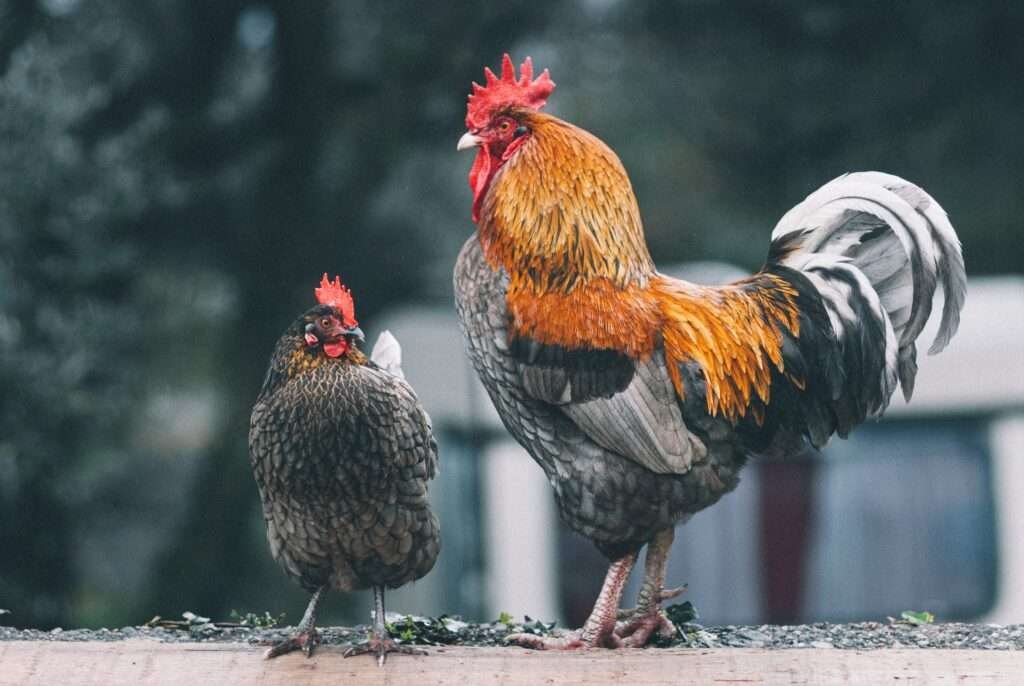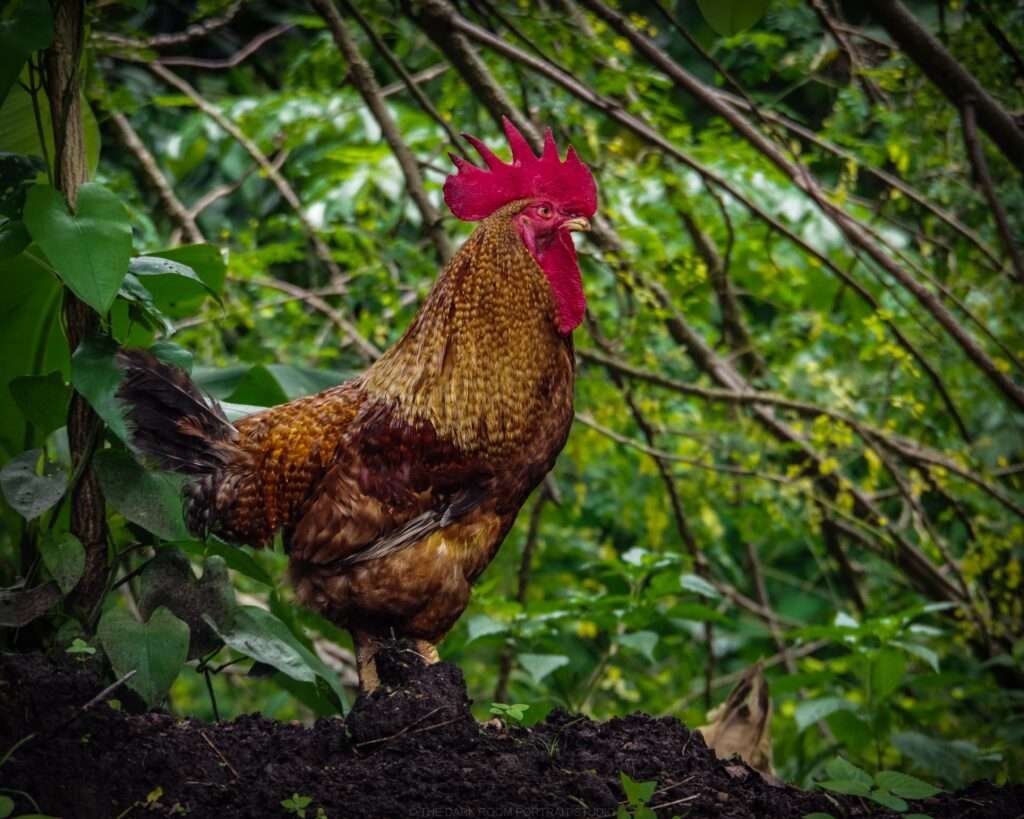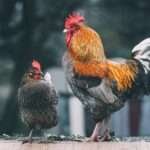
Have you ever found yourself marveling at how chicken eggs are fertilised? From the critical roles of roosters and hens to the remarkable stages of egg development, the journey from fertilization to a potential new life is nothing short of captivating. In this comprehensive guide, we will explore the captivating world of egg fertilization, uncovering the hidden mechanisms that culminate in a fertilized egg. We’ll debunk myths surrounding fertilized eggs, address concerns about consumption, and dive into the intricacies of the development process. So, let’s embark on this enlightening journey and discover the secrets behind the magic of fertilization!
The Anatomy of a Chicken Egg:
The humble chicken egg is a marvel of nature, a feat of biological engineering that nurtures and protects the potential for new life. To truly appreciate the process of how chicken eggs are fertilized, we must first delve into the intricate anatomy of these incredible structures. Each component of an egg serves a crucial purpose, ensuring the optimal conditions for embryonic development. From the resilient outer shell to the delicate inner membranes surrounding the yolk and the essential air cell, let’s explore the fascinating anatomy of a chicken egg:
- The Protective Outer Shell: The journey of a chicken egg begins with its sturdy outer shell. Composed mostly of calcium carbonate, the shell is porous, allowing for the exchange of gases while safeguarding the egg’s precious contents. This calcified fortress not only protects the developing embryo but also prevents harmful microorganisms from entering the egg.
- The Inner and Outer Membranes: Underneath the shell lies a set of protective membranes, with the outer membrane adhering closely to the shell’s inner surface. The inner membrane, in turn, envelops the developing embryo, ensuring that it stays safely in place. These membranes work in harmony, acting as barriers to prevent bacterial invasion while allowing gases to permeate the egg.
- The Air Cell: As an egg ages, it naturally loses moisture through the porous shell. This gradual dehydration creates an air cell within the larger end of the egg. The air cell serves as a crucial marker of freshness and egg quality. When you hold a fresh egg to the light, the air cell is barely visible, but as the egg ages, it becomes more prominent.
- The Albumen (Egg White): Surrounding the yolk is the albumen, commonly known as the egg white. This clear fluid consists mainly of water and proteins, providing essential nutrients to the growing embryo. The albumen also serves as a cushion, protecting the yolk and embryo from jostling within the egg.
- The Chalaza: Within the egg white, two rope-like strands known as chalazae anchor the yolk to opposite ends of the shell’s interior. These chalazae serve as stabilizers, keeping the yolk centered and preventing it from coming into contact with the eggshell. Observing the chalazae can be an indicator of the egg’s freshness, as they become less distinct with time.
- The Yolk: At the center of the egg lies the golden yolk, a nutrient-rich reservoir containing fats, proteins, and essential vitamins. The yolk is the primary source of nourishment for the developing embryo, providing it with the nutrients required for growth during incubation.
- The Germinal Disc (Blastodisc): Slightly off-center of the yolk’s surface is the germinal disc, also known as the blastodisc. This tiny, circular spot is where fertilization occurs. If a rooster’s sperm successfully penetrates the ovum, the blastodisc develops into the blastoderm, marking the beginning of embryonic development.
Understanding the intricacies of the anatomy of a chicken egg allows us to marvel at the complexities of nature.Each component contributes to the egg’s ability to sustain life and perpetuate the cycle of new generations.

The Role of the Rooster in How Chicken Eggs are Fertilised
Roosters, the vibrant and charismatic male counterparts to hens, play a pivotal role in the fertilization of chicken eggs. Their primary function is to deliver the vital ingredient for new life – sperm – which initiates the process of fertilization. Understanding the role of roosters in this intricate biological dance sheds light on the fascinating dynamics of avian reproduction. Let’s delve into the essential role roosters play in the fertilization process:
- The Mating Ritual: Roosters possess inherent courtship behaviors, which are essential for successfully mating with hens. When a rooster is attracted to a particular hen, he displays a courtship dance that includes fluffing his feathers and drooping his wings. He emits distinctive crowing calls to assert his dominance and attract the hen’s attention.
- Cloacal Contact: To transfer sperm to the hen, roosters engage in cloacal contact during mating. The cloaca is a multi-purpose opening on the underside of the bird, functioning for reproductive and digestive systems. During mating, the rooster’s cloaca comes into direct contact with the hen’s, allowing for the exchange of sperm.
- The Sperm Transfer: Inside the rooster’s cloaca, a specialized organ called the phallus or the cloacal protuberance temporarily protrudes during mating. This structure facilitates the transfer of sperm from the rooster’s reproductive tract into the hen’s. The sperm travels up the oviduct, where it awaits the ovum’s release for fertilization to occur.
- Sperm Storage: One of the remarkable aspects of avian reproduction is the ability of hens to store sperm for extended periods. Once transferred, the sperm is stored within the hen’s reproductive tract, where it can remain viable for up to several weeks. This unique feature enables hens to fertilize eggs without requiring constant mating with roosters.
- Fertilization and Embryonic Development: When the hen ovulates and releases an ovum, the stored sperm within her reproductive tract travels up the oviduct to meet the ovum. Fertilization occurs if a sperm successfully penetrates the ovum’s protective layers, resulting in the formation of a zygote. From this point, the embryo begins its development within the egg.
- The Genetic Contribution: The genetic material carried in the sperm determines the traits and characteristics of the resulting offspring. The rooster’s sperm carries half of the genetic information required for embryo development. The other half is contributed by the hen’s ovum. This combination of genetic material ensures the diversity and variability within the chicken population.
- A Multi-Male Strategy: In some instances, multiple roosters may mate with the same hen. In these cases, the sperm of different roosters can compete to fertilize the hen’s ovum. This phenomenon is known as multiple paternity or superfecundation. The resulting offspring may have different fathers, adding to the genetic diversity within the clutch of eggs.
The role of roosters in how chicken eggs are fertilised is essential for maintaining genetic diversity. Their unique courtship rituals, cloacal contact, and sperm transfer mechanisms are all part of ensuring successful reproduction. Roosters play a central role in the creation of new life, making them an indispensable part of the captivating world of avian reproduction.
The Journey of Chicken Egg Fertilization:
The journey of fertilization within a chicken egg is a fascinating dance of life that begins with the reproductive prowess of the rooster and the enigmatic ovum released by the hen’s ovary. This intricate process takes place within the hen’s oviduct, a series of specialized segments that harbor the potential for new life. Let’s take a step-by-step journey through the captivating process of fertilization:
- Maturing Ova in the Hen’s Ovary: The journey of fertilization commences with the hen’s ovary, where several ova, also known as eggs, mature within small, fluid-filled sacs called follicles. Once the ovum is fully developed, it is released from the ovary and enters the hen’s reproductive tract.
- Ovulation and the Infundibulum: Upon ovulation, the ovum is caught by the infundibulum, the funnel-shaped first segment of the hen’s oviduct. The infundibulum serves as a catching chamber, where the ovum awaits fertilization.
- The Encounter with Sperm: For fertilization to occur, the ovum must encounter sperm. This happens after the rooster has engaged in a mating ritual with the hen, culminating in the transfer of sperm through cloacal contact. The sperm then travels up the oviduct and into the infundibulum, where the meeting of sperm and ovum takes place.
- The Critical Role of the Sperm’s Nucleus: The nucleus of the sperm contains the paternal genetic material, which is essential for fertilization. Upon fusion with the ovum, the sperm’s nucleus combines with the ovum’s nucleus, forming a complete set of genetic instructions that will guide the development of the embryo.
- The Formation of the Zygote: The fertilized ovum, now called a zygote, continues its journey along the oviduct. As the zygote progresses, it undergoes a series of divisions, resulting in the formation of a multicellular structure known as a blastoderm. The blastoderm is the first visible indication of embryonic development within the egg.
- Albumen Secretion and Egg Formation: As the zygote travels through the oviduct, the hen’s reproductive system secretes layers of albumen (egg white) around the developing embryo. This clear fluid provides the growing embryo with essential nutrients and protection.
- Shell Formation and Egg Laying: As the zygote reaches the lower section of the oviduct, it passes through the shell gland, where calcium is deposited around the egg to form the protective outer shell. The egg is then laid through the hen’s vent, completing the journey of fertilization.
- Incubation and Embryonic Development: Once the egg is laid, the potential for new life lies within its shell. If the egg is kept under appropriate conditions, such as in a nest or an incubator, the embryo will continue to develop. Regular turning or movement of the egg ensures even heat distribution and proper development of the chick.

Embryo development
Embryo development in chickens is nothing short of a miraculous and awe-inspiring process. From a single cell to a fully-formed chick, this journey unfolds within the confines of a protective eggshell, guided by the intricate interplay of genetic instructions and environmental conditions. Let’s delve into the remarkable stages of embryo development and witness the wonders of life taking shape:
- Fertilization and the Zygote: Embryo development begins at the moment of fertilization. When a sperm successfully penetrates the ovum, the two nuclei merge, fusing the genetic material from the hen and the rooster into a single cell. This newly formed cell, called a zygote, contains all the genetic instructions required for the formation of a chick.
- Cleavage and Blastoderm Formation: Following fertilization, the zygote begins to divide through a process called cleavage. This rapid series of cell divisions results in the formation of a multicellular structure known as the blastoderm. The blastoderm appears as a small white spot on the yolk, and it contains the embryonic disc where the chick will develop.
- Gastrulation and Germ Layer Formation: During gastrulation, the blastoderm undergoes further differentiation, forming three primary germ layers: ectoderm, mesoderm, and endoderm. Each germ layer will give rise to different tissues and organs as the embryo develops. The ectoderm will form the nervous system, skin, and feathers, while the mesoderm will give rise to muscles, bones, and the circulatory system. The endoderm will develop into the respiratory and digestive systems.
- Organogenesis and Body Formation: As the embryo continues to develop, the germ layers undergo organogenesis, where organs and body structures begin to take shape. Tiny buds appear, which will later grow into wings and legs. The heart starts to beat, and blood circulation begins. The eyes and beak become recognizable, and the spinal cord and brain start to form. The embryo’s body elongates and bends to accommodate the developing organs.
- Formation of Extraembryonic Membranes: Within the egg, the embryo is surrounded and nourished by extraembryonic membranes. The yolk sac provides nutrients to the developing chick, while the amnion encases it in a protective fluid-filled sac. The allantois functions as a respiratory organ, exchanging gases with the surrounding environment.
- Chorioallantoic Membrane and Eggshell Breathing: Around day 10 of incubation, the chorioallantoic membrane starts to form. This vascularized membrane will eventually envelop the entire inner surface of the eggshell, providing a means for gas exchange. As the embryo develops and oxygen demand increases, the embryo will start to breathe air diffusing through the eggshell pores.
- The Final Stages: As the embryo nears the end of its development, it moves into a position conducive to hatching. The beak is positioned towards the air cell at the blunt end of the egg, ready to break through the shell. In the final days, the chick will absorb the remaining yolk, which will serve as a source of nutrients during its first few days after hatching.
- Hatching: After approximately 21 days of incubation, the fully developed chick is ready to emerge from the egg. Using its egg-tooth—a small, pointed protuberance on its beak—the chick pips a hole in the shell and begins to push its way out. The hatching process may take several hours, and it is a laborious and demanding feat for the young chick.
- Embryo development in chickens is a true marvel of nature, a complex and harmonious symphony of genetic expression and environmental interactions. The journey from a single cell to a fluffy chick is a testament to the wonders of life and the intricate dance of biology that unfolds within the safe confines of the eggshell. Witnessing this miraculous process reminds us of the delicate balance that sustains life and fills us with awe for the natural world around us
Delving into the process of how chicken eggs are fertilized offers a profound appreciation for the wonders of life. Roosters’ vital role, the intricacies of egg development, and the debunking of myths surrounding fertilized eggs all contribute to our understanding of this miraculous journey. Remember, fertilized eggs are safe to eat, and the discovery of blood spots does not diminish their quality. Whether you’re a poultry enthusiast, a curious observer, or a chicken keeper looking to hatch new life, the captivating world of egg fertilization fosters a deeper connection to the beauty of nature and the miracles within our cherished feathered friends






